The young man in this carte-de-visite portrait is wearing a military-style tunic with an “F” on the collar. The photograph was taken at the studio of Fredrique Holmstedt in Vadstena, Sweden. I had difficulty finding information online about Fredrique. Unable to read the handwritten dedication in Swedish in the upper left corner, I turned to fellow blogger Thérèse Amnéus and asked if she could help. She wasn’t sure about the first line, but she said the second line is Frälst af nåd, or Saved by Grace:
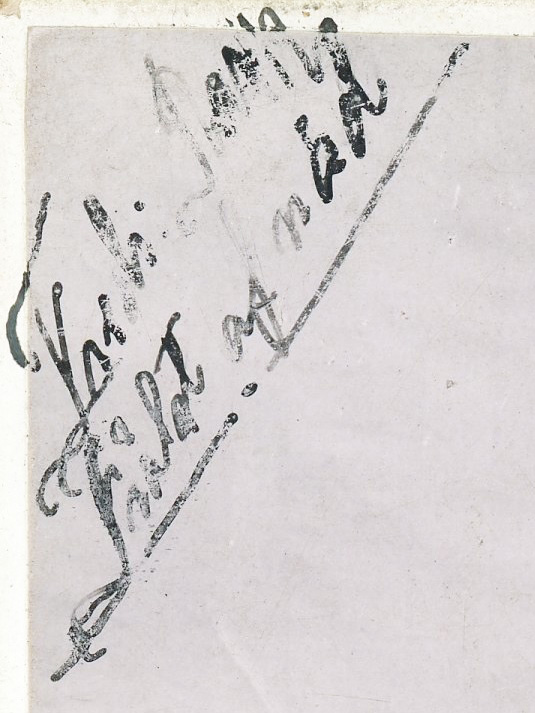
Thérèse said she thought the young man might have been a member of the Salvation Army, because she had found a portrait online of two Salvation Army men posing with guitars in Åvik, Sweden. (That photo was taken by Mia Ohlsson and you can see it here.) Thérèse was right. Salvation Army uniforms in Sweden have an “F” on the collar, because Salvation Army in Swedish is Frälsningsarmén.
Thérèse also found some information about Fredrique Holmstedt that I had missed. She was born Fredrika Bernhardina Holmstedt in 1865 in Helsingborg, Sweden. Her studio was located in Vadstena from 1892 until 1898, at which point she moved it to the town of Ödeshög. In 1904 she married a man named Herman Sjöström and changed the name of the studio to Sjöströms Ateljéer. In 1910 she and Herman moved to the town of Örkelljunga, where they lived until her death in 1922. Remarkably, her camera and other photographic equipment have been preserved there.

The carte-de-visite came to me from Washington State, where many immigrants from Scandinavia settled. Did the earnest young man with the guitar immigrate to the United States? Or was the photo brought over by the person he gave it to? Interestingly, members of the Frälsningsarmén sometimes came to America specifically to work with Swedish immigrants here. (See for example this portrait from Boston, Massachusetts, and the comments underneath it from readers.)
The Frälsningsarmén ended its mission in Vadstena in December 2008 and sold the historic building it had occupied there for 99 years.
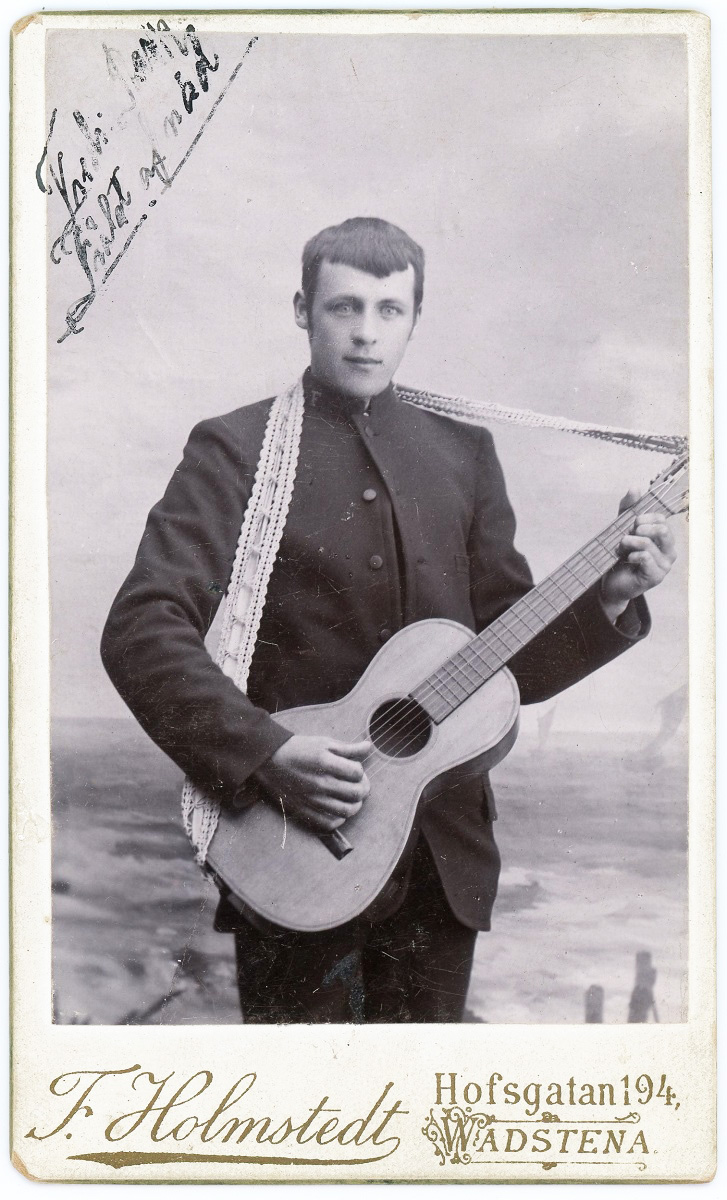

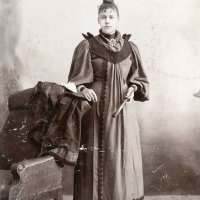
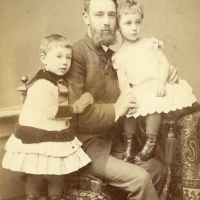
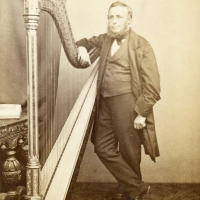
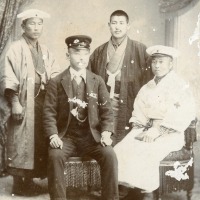
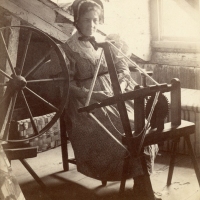
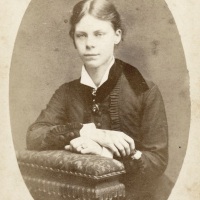
Hello Brad, how are you doing? Hope everything is all right.
LikeLiked by 1 person
I’m doing fine, Luisella, thank you! It’s nice to reconnect with you!
LikeLiked by 1 person
Yes! I thought you had stopped blogging, as I was not receiving your posts on the WP Reader’s page. Then I found out I had unfollowed. Involuntarily, of course. Who knows what I did with the touchscreen1 🙂
LikeLiked by 1 person
I like his guitar strap!
LikeLiked by 3 people
It looks custom-made! 🙂
LikeLiked by 2 people
The guitar strap caught my eye as well.
LikeLiked by 2 people
Good research and a nice collaboration! 😊
LikeLiked by 3 people
When you need information, ask a journalist! 😉
LikeLiked by 2 people
Well, you found out a lot yourself, Brad! 😊
LikeLiked by 2 people
Nice to have some history for it.
LikeLiked by 2 people
Just the tip of the iceberg, but something is better than nothing. Cheers, CJ!
LikeLiked by 2 people
I guessed Salvation Army before reading. Very unusual guitar strap. How lucky you were able to collaborate to find more info about Fredrique.
LikeLiked by 3 people
The strap looks really nice, probably made by someone close to him. I didn’t guess Salvation Army because he doesn’t have a badge or a hat on, but the guitar should have been a giveaway. I also should have found the information about Fredrique, but sometimes I get frustrated and give up too soon. 😜
LikeLiked by 3 people
Sometimes I will be looking for some info which leads me to something else which leads to yet another thing and so on. Then I have to start over entirely. 😀
LikeLiked by 3 people
What a great collaboration between you and Therese! An interesting story, as usual, from you Brad. I really recommend Therese’s blog for those fascinated by early photographs and their stories. (Sorry I can’t find the accents for the ‘e’s on my keyboard!)
LikeLiked by 3 people
Thérèse’s posts are always very thoughtful, and I’m learning a lot from them about China during the period when her great-grandparents were there. Regarding the accents, I just copy and paste her name. 😉
LikeLiked by 2 people
Thank you so much, Brad! How nice of you! I learn so much from your blog as well – always very well researched! 🌟
LikeLiked by 1 person
Thank you, Louise! It was very nice to be asked something about a Swedish photo that somehow ended up in the USA. I think the young man looks persuaded by his faith. One would like to know more about him! 😊
LikeLiked by 2 people
He does look sincere. I’d also be curious to know what direction his life took after this moment. He looks young, perhaps about to leave Vadstena on a great adventure.
LikeLike
Yes, very. He has a kind of glow to his eyes as well. Perhaps he did go to America like so many others in the late 1800s, beginning 1900s. It would be interesting to know what the first line on the card says – perhaps a name?
LikeLiked by 2 people
I enjoyed looking at your blog. My paternal grandparents came to the U.S. from Gävle (then, Gefle) in the early 1900s. Oddly, they came aboard the same ship, but didn’t meet until they both were living in Minneapolis, Minnesota. One of my most cherished possessions is a ceramic cheese board my grandmother brought with her. It’s typically blue and white, and has the name of Jric Jerstrom, Bosättningsaffär, Gefle, on it. I had a hard time finding precisely when Gefle was the name of the town, but finally postage stamps gave a clue. Dates from around 1905 made sense — that’s around the time my grandparents would have departed.
LikeLiked by 2 people
Thank you! Your paternal grandparents seem to have left Sweden around the same time my great grandparents did. In 1905, my great grandmother went to China and my great grandfather left the US around 1909 (he had emigrated from Sweden a few years earlier) for China as well. I think many Swedes found each other abroad, as they shared both culture and language. Gävle actually has an interesting story to it’s name. It’s been spelled in numerous different ways and the city council went through with the modern name of Gävle in the 1940’s. But as late as the 80’s the local paper (still called Gefle Dagblad) motioned to change back to the old form, but it didn’t go through. Did your grandparents speak Swedish with each other?
LikeLiked by 2 people
Linda, I remember your post on The Task at Hand where you wrote about your Swedish grandparents (“Still Grandma’s Girl”). Thérèse also wrote movingly about her grandmother (“Food, flowers and a garden swing”). Both posts made a lasting impression on me.
LikeLiked by 1 person
Thanks for telling about Lindas’ post – it was lovely! And it reminded me of my own grandparents – many similarities!!😊🙏
LikeLiked by 1 person
I agree with you, Louise, about Thérèse’s fascinating blog. I always enjoy her posts.
LikeLiked by 2 people
I would love to see the return of the carte de visite.
LikeLiked by 2 people
They were great, and they’ve survived really well. I’m not at all sure the same will be true for the digital technologies we’re using today.
LikeLiked by 1 person
Interestingly, there’s one place such “carte de visites” still exist — among cruisers. It’s quite common for those anchored together in far-flung places to exchange such cards. Granted, they’re more like business cards, but they’re often a bit larger, with more information. Of course, the photo usually is of the boat!
LikeLiked by 1 person
I question the survival of so many digital photos. As technology evolves, we’re no longer able to access content created with obsolete technology.
LikeLiked by 2 people
He looks like a confident young man. Interesting guitar strap.
LikeLiked by 2 people
I clearly know very little about the history of the Salvation Army, because this was all new to me. The links were very helpful, too. What a fascinating guitar strap, too.
LikeLiked by 2 people
The museum page I linked to with the photo of two men with guitars also has interesting information about the work of the Salvation Army in Sweden at that time. (The text is in Swedish, so l used Google Translate.) I’ve read in the past about the founding of the Salvation Army in England and the establishment of a branch in the USA. Some of the founders were women who took great personal risks in working with the poorest and most destitute members of society. They were very courageous.
LikeLiked by 2 people
I spotted that guitar strap immediately. It’s remarkably similar to the lace and crocheted trims for sheets and pillowcases my Swedish grandmother created while sitting on the porch with her friends. See my comment to Thérèse for a little more information about Grandma.
LikeLiked by 3 people
That’s so neat, Linda!
LikeLike
I thoroughly enjoyed the post and the comments. How wonderful that Thérèse was able to help you with history and context!
LikeLiked by 1 person
Yes, it was very kind of her to help. I need to “up my game” in terms of online research in foreign languages. Just Googling a name and location isn’t always enough. Thank you for your comments, Liz!
LikeLike
It was fascinating reading your well-researched post, Brad. Thanks to Thérèse. It brought me a sense of nostalgia. Many interesting stories will go unnoticed without your insightful posts.
LikeLiked by 1 person
Thank you so much, Isabelle. Your comments are always very encouraging! This post made me feel a little bit nostalgic as well. Initially my focus was on three things: the portrait itself, the fact that it was taken by a woman, and the possibility that the young man might have emigrated from Sweden to the United States. As I learned more about Fredrique (thanks to Thérèse) and then about the Salvation Army leaving Vadstena in 2008, the post began to feel more like a record of an era that had passed. The fact that Fredrique’s camera and equipment had been preserved, after her long and successful career, was a poignant element of the story for me. It showed that someone valued her memory enough to preserve the objects that were important to her.
LikeLiked by 1 person
Yes Brad, it’s great that Fredrique’s long career has been cherished and her story has become part of cultural heritage in Sweden. I’d also like to know the story behind the guitarist, a very handsome man with kind, gentle eyes – what kind of life he had lived in the States or Sweden. I have a fascination for the past. I love nostalgia. If I were to have a time machine, I’d love to travel back to the Victorian Era and live there for a while 😊
LikeLiked by 1 person
Oh my God, I love that guitar strap!
LikeLiked by 1 person
Poor guy, he wants to sing about Love, but the girls are only interested in his guitar strap. 😉
LikeLike
Those eyes! He has quite a penetrating gaze, doesn’t he?
I loved the history of the photographer. It’s always interesting to learn about women entrepreneurs/artists back in the day.
LikeLiked by 1 person
Women artists and entrepreneurs faced many challenges, but their lives must have been rewarding as well. In Fredrique’s case, marriage didn’t slow her down at all, apparently!
LikeLiked by 1 person
Love the guitar strap.
LikeLiked by 1 person